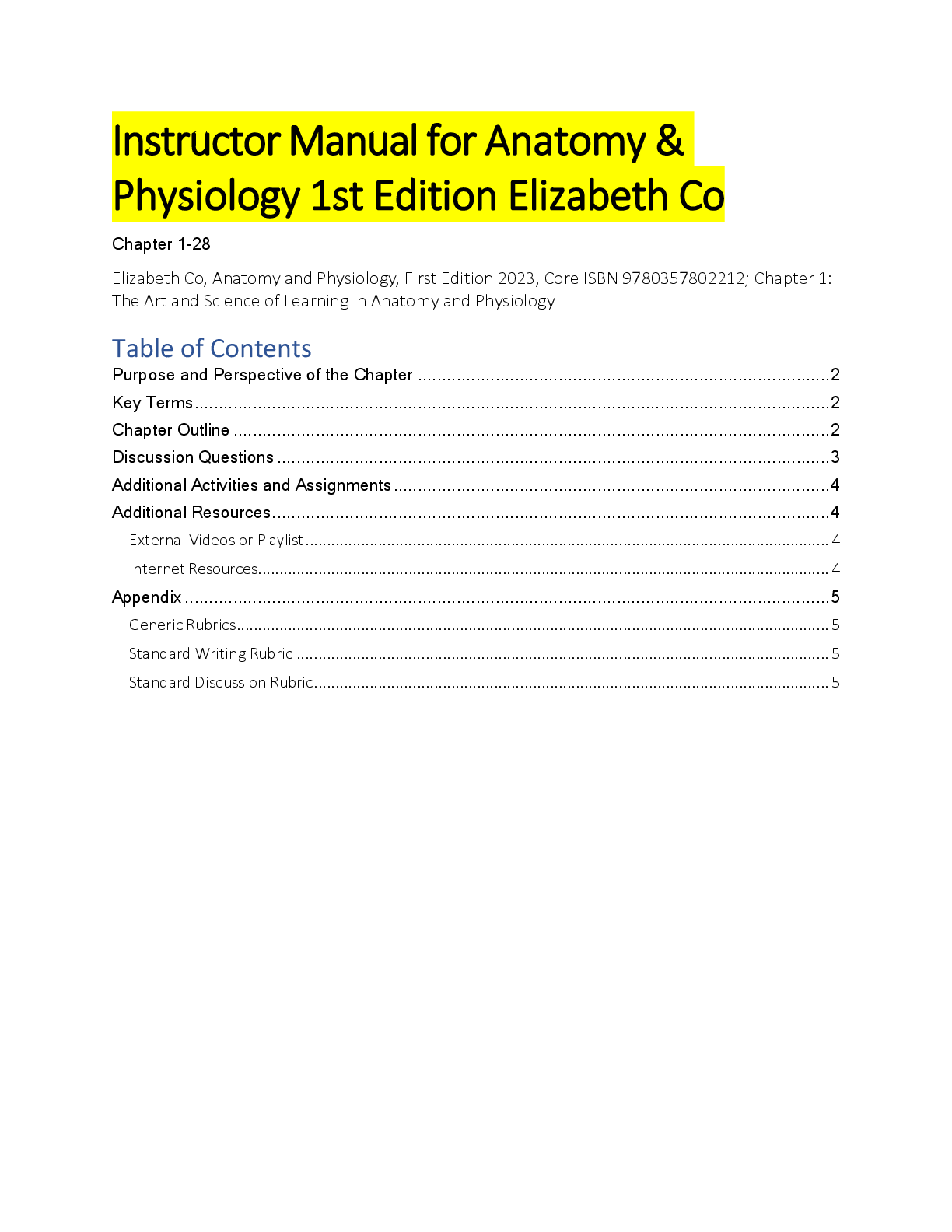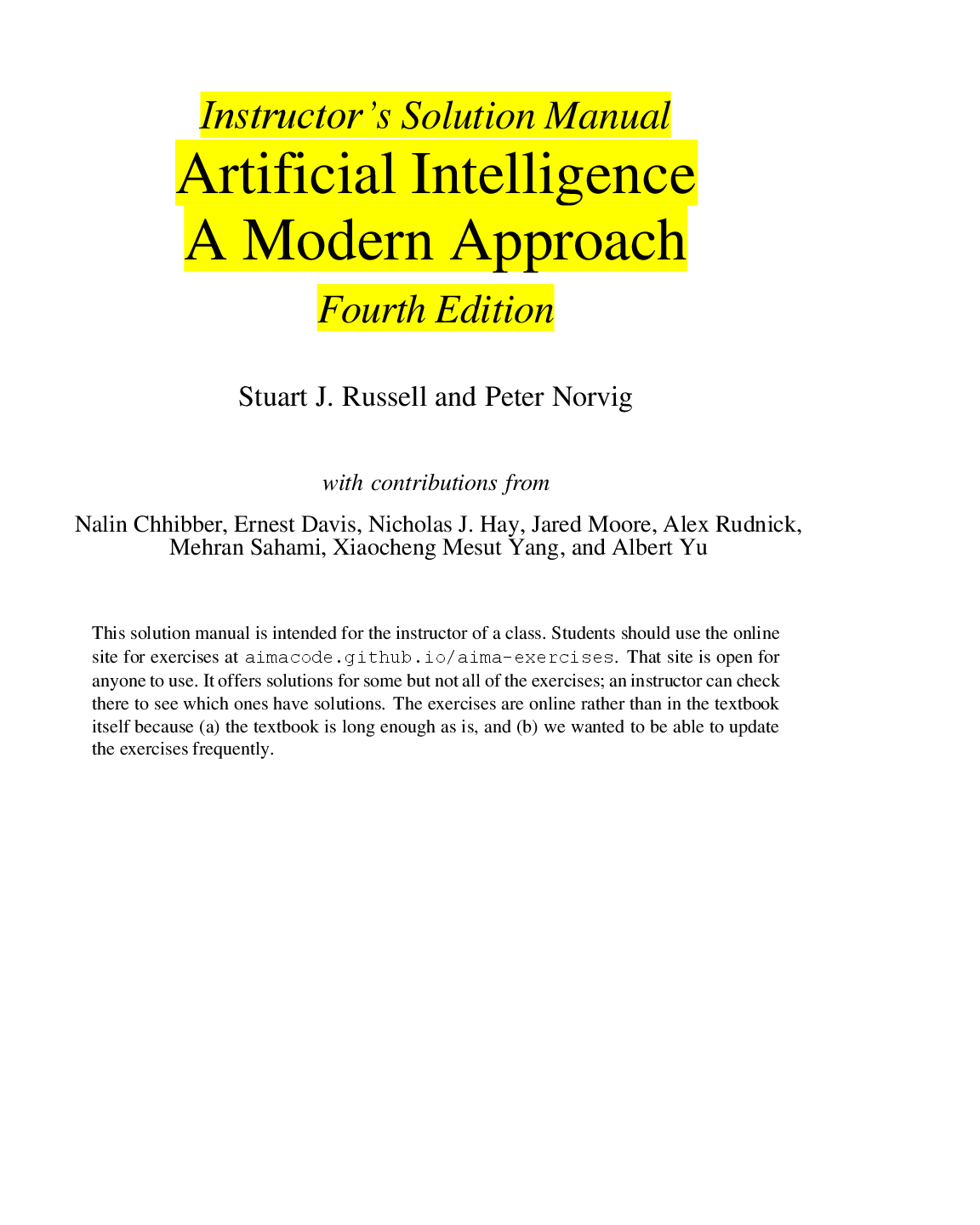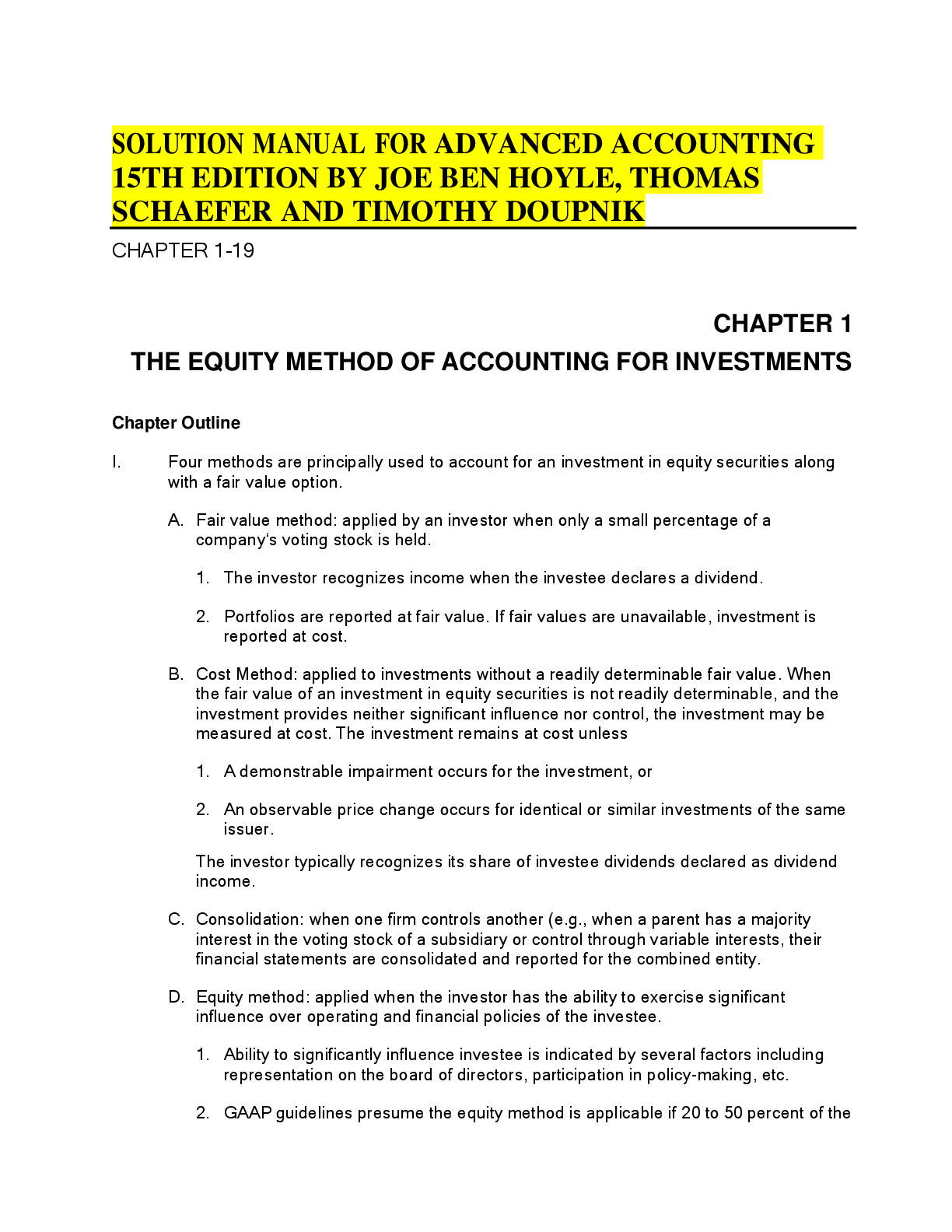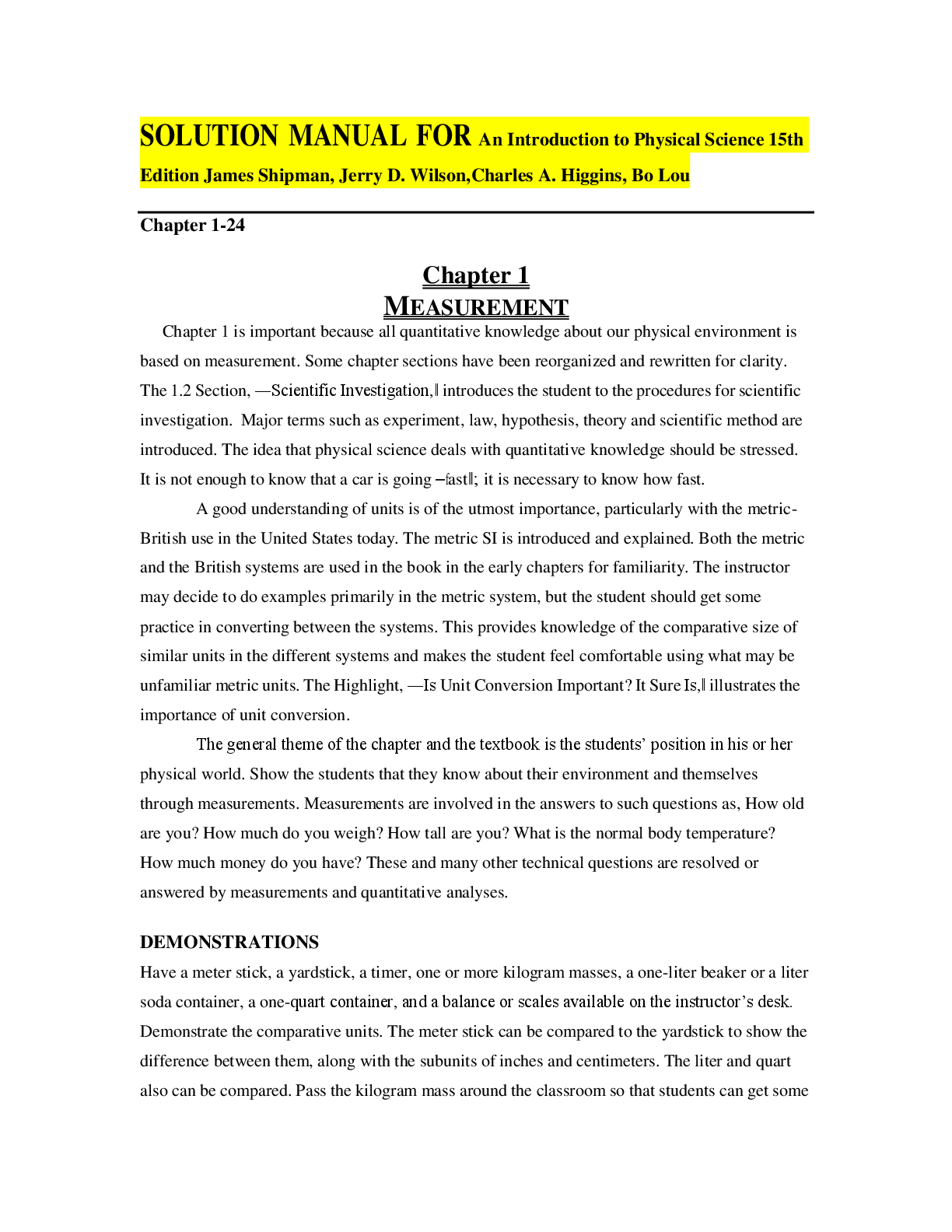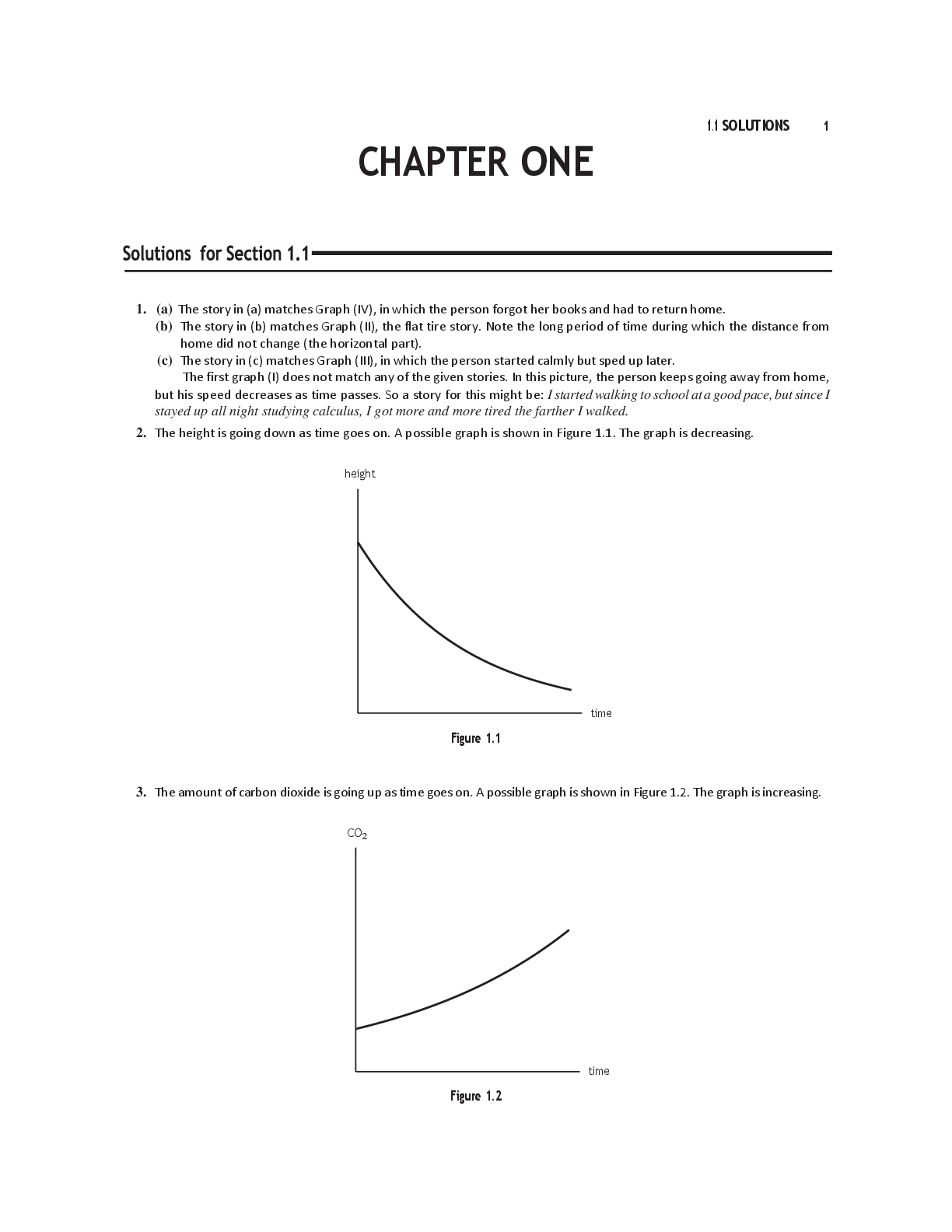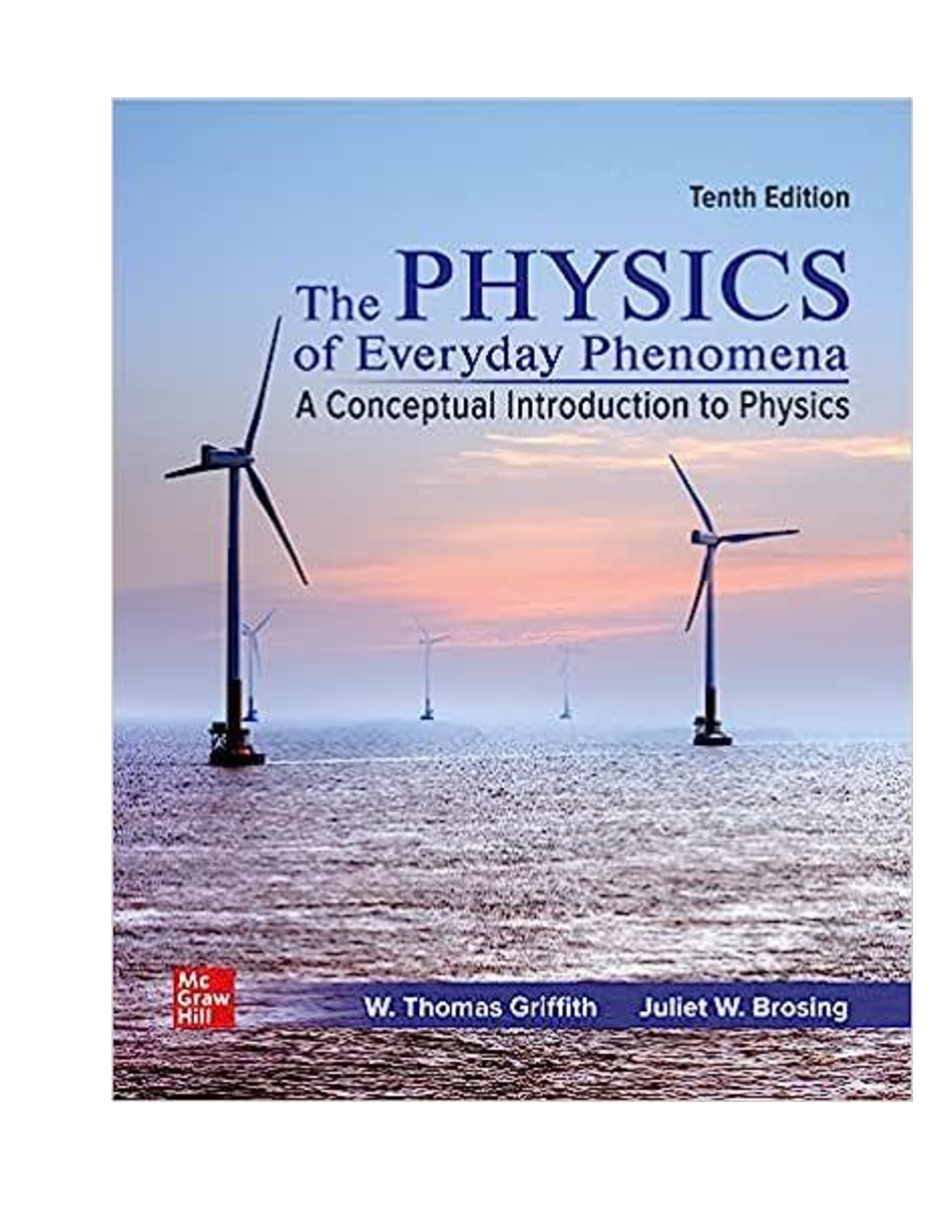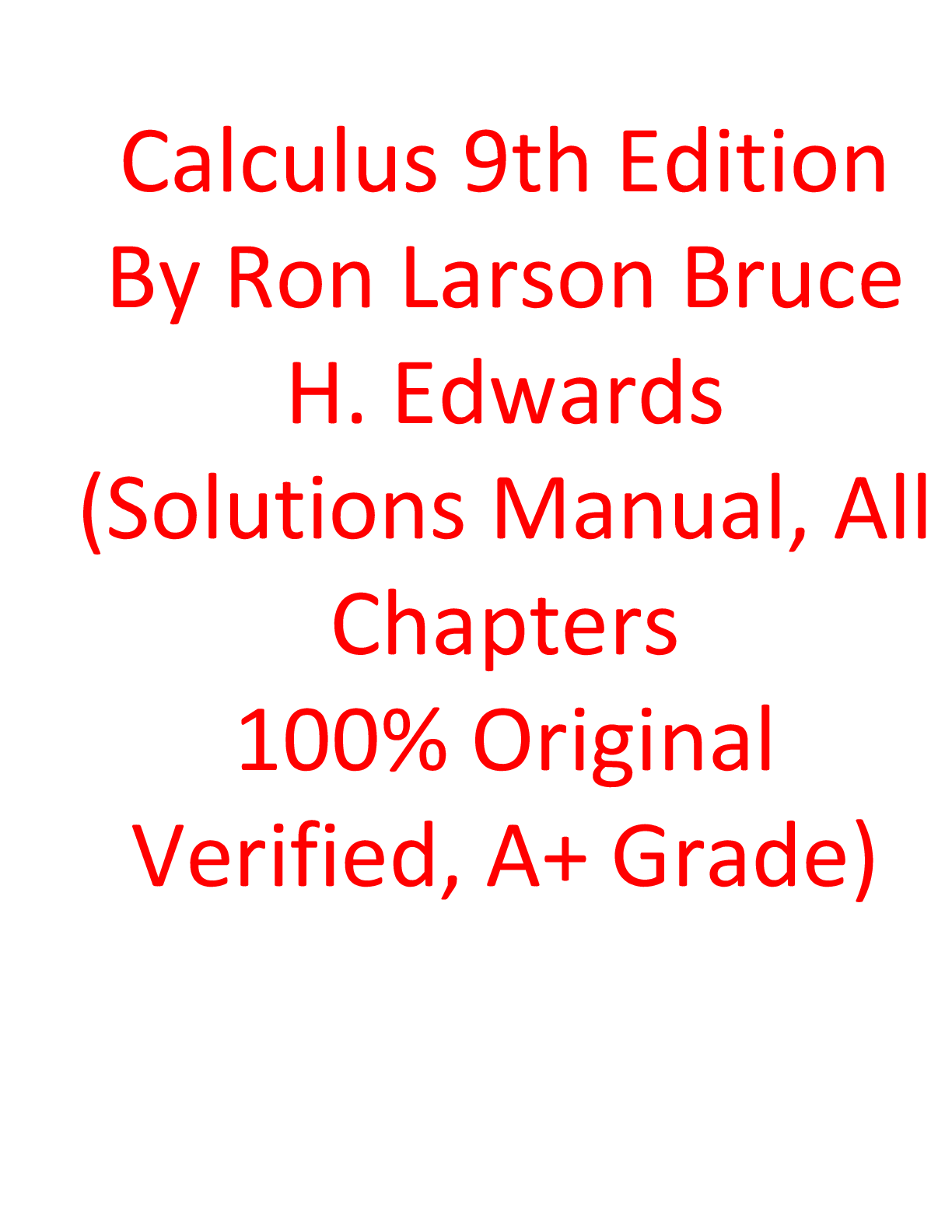Criminal Justice > SOLUTIONS MANUAL > Solution Manual for Introduction to Criminal Justice 10e Robert M. Bohm, Keith N. Haley (All)
Solution Manual for Introduction to Criminal Justice 10e Robert M. Bohm, Keith N. Haley
Document Content and Description Below
Solution Manual for Introduction to Criminal Justice 10e Robert M. Bohm, Keith N. Haley-The chapter begins by discussing crime in the United States. It briefly describes several famous criminal case ... s in recent history. Criminal justice is examined as a system. That system includes the police, the courts, and corrections. The police deal with crime, crime control, arrests, and bookings. The prosecution deals with charging the defendants. The prosecution also determines if the suspect has committed a misdemeanor, an ordinance violation, or a felony. It may file an information or an indictment. An arrest warrant may be issued by the court so that the police may arrest a suspect. There are a variety of stages in a court that defendants may experience. They may have an initial appearance, an arraignment, and a bail set; a preliminary hearing may occur. Defendants may have a bench trial or a jury trial. They may participate in plea bargaining or simply plead guilty and receive their sentence. Convicted defendants then become part of the correctional system, where they may receive probation, intermediate punishments, or incarceration. After serving a portion of their sentence, they may be paroled. Next, the chapter discusses how the criminal justice system is sometimes viewed as a nonsystem because of the differences among different jurisdictions of independent agencies within the United States and the conflict and confusion among them. The chapter then presents the two models of the criminal justice system. The first, the crime control model, reflects traditional conservative political values. In this model, the control of criminal behavior is the most important function of criminal justice. The second, the due process model, embodies traditional liberal political values. In this model, the principal goal of criminal justice is at least as much to protect the innocent as it is to convict the guilty. Bohm, Introduction to Criminal Justice, 10e The chapter ends with a discussion of myths about crime and criminal justice. The chapter also uses the history of trial by ordeal as an example. Throughout the book, criminal justice myths are exposed and explained. Lecture Outline I. Crime in the United States Every day people are confronted with reports of crime in newspapers, magazines, and radio and television news programs. Crime is a favorite subject of movies and novels. Unfortunately, some people encounter crime more directly as victims. No wonder crime is a top concern of the American public. II. Criminal Justice: An Institution of Social Control Like the family, schools, organized religion, the media, and the law, criminal justice is an institution of social control in the United States. A primary role of such institutions is to persuade people, through subtle and not-so-subtle means, to abide by the dominant values of society. Subtle means of persuasion include gossip and peer pressure, whereas expulsion and incarceration are examples of not-so-subtle means. III. Criminal Justice: The System Criminal justice in the United States is administered by a loose confederation of more than 50,000 agencies of federal, state, and local governments. There are differences in the ways the criminal justice system operates in different jurisdictions, there are also similarities. The term jurisdiction, as used here, means a politically defined geographical area. Misdemeanors are less serious crimes generally punishable by a fine or by incarceration in jail for not more than one year. Felonies are serious offenses punishable by confinement in prison for more than one year or by death. A. Police The criminal justice response to crime begins when a crime is reported to the police or, far less often, when the police themselves discover that a crime has been committed. Often, an arrest supported by witness statements and crime scene evidence is sufficient to close a case, especially with a less serious crime. [Show More]
Last updated: 8 months ago
Preview 5 out of 166 pages

Loading document previews ...
Buy this document to get the full access instantly
Instant Download Access after purchase
Buy NowInstant download
We Accept:

Reviews( 0 )
$14.50
Can't find what you want? Try our AI powered Search
Document information
Connected school, study & course
About the document
Uploaded On
Apr 07, 2025
Number of pages
166
Written in
All
Additional information
This document has been written for:
Uploaded
Apr 07, 2025
Downloads
0
Views
30





